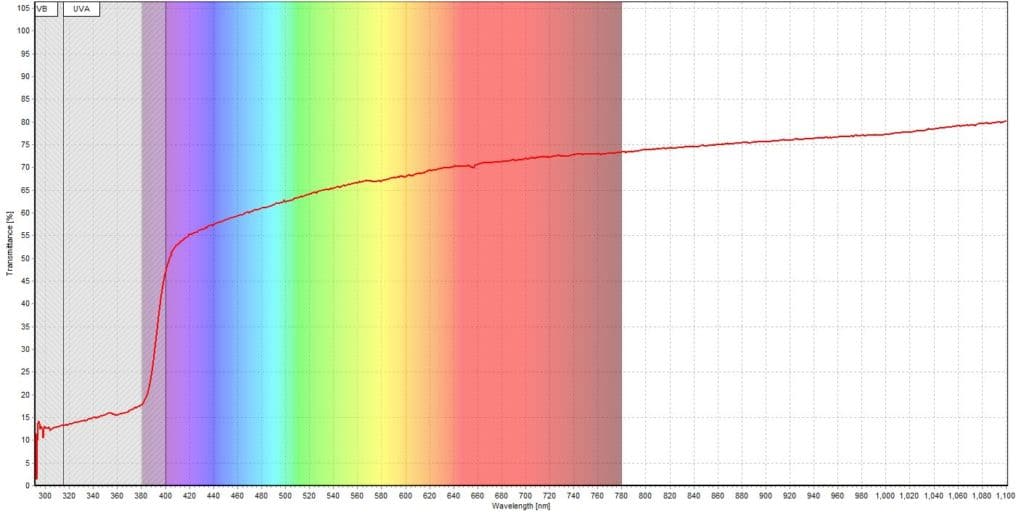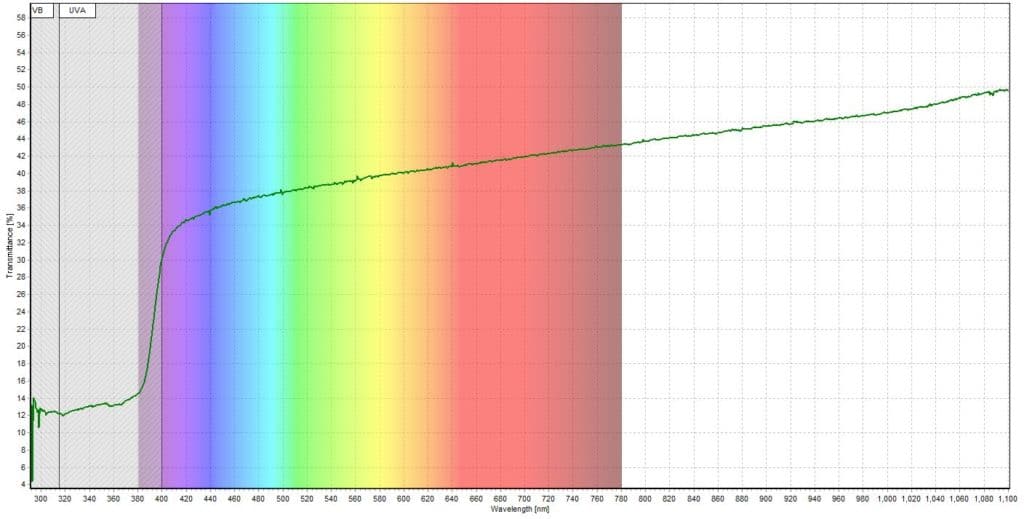Does Your Sunscreen Go Bad?
Spectra of the Month (March 2022)
Conducted by: David Ademe (Applications Engineer), Avantes Inc.
Theme: Transmission
Background/Applications:
Transmission spectra can be used in a wide range of measurements and data collection to reveal unique and unknown properties of materials. It is crucial to understand how materials that we interact with behave when exposed to photons across the UV/VIS/NIR spectrum. One excellent example of this is sunscreen. It is important to know if the sunscreen is blocking UV light from damaging your skin. We tested four different sunscreen samples to determine the effectiveness of the UV blocking. In addition, we tested an expired sunscreen sample as well to determine the effectiveness of sunscreen past the expiration date.
Description of Methodology:
For this experiment, we used an AvaLight-DHc as the illumination source. This source has both a deuterium light source and a halogen light source, providing spectral output between 200 and 2500 nm for a variety of absorbance, transmission, and specular reflection applications. Deuterium emits light primarily between 200 and 450 nm, whereas halogen emits light from 360-2500 nm. Due to its internal filtering, this source has a relatively flat combined spectral output over the range of interest. Due to its relatively lower spectral power, it is often useful to select larger core fiber optics (400 or 600 micron core) or direct attach cuvette holders with this source to minimize integration times.The integrated TTL-shutter makes saving a dark measurement very simple in combination with AvaSoft (extra IC-DB26-2 needed). Therefore, this is the perfect light source for transmission measurements in the UV region.
Two FC-UVIR600-1-BX fibers were used, as the larger core diameter will be useful in capturing as much light as possible from the DHc light source. The TR-Stage-US (available only in North America) transmission stage was placed inline to hold the sample. On the spectrometer end, we selected the AvaSpec-ULS2048XL-EVO, combining exceptional quantum efficiency with high-speed acquisition and signal to noise are the key value propositions of the AvaSpec-ULS2048XL EVO spectrometer. Unlike many back-thinned CCD spectrometers that have two-dimensional arrays, the ULS2048XL-EVO has large monolithic pixels of 14×500 microns with exceptional efficiency in the UV range, from 200 to 400 nm, and the NIR range, from 950 to 1160 nm. This spectrometer is configured from 200 nm to 1100 nm to show the transmission through the sunscreen across the full UV and VIS spectrum.
Test Data and Results:
Below are images of the samples tested. All samples are SPF 30.
Analysis:
All four spectra display the same general transmission spectrum. This is to be expected, as all four sunscreen samples are incredibly alike one another and are all SPF 30. However, the expired sample is clearly not nearly as effective at blocking UVA and UVB light as the not expired sunscreen samples are. AvaSoft gives us the ability to highlight the UVA and UVB regions to see this cutoff.
Sunscreen works by blocking and absorbing UV rays through a combination of physical and chemical particles. Physical particles, such as zinc oxide and titanium dioxide, are used to reflect UV radiation from the skin. At the same time, complex chemical ingredients in sunscreen react with radiation before it penetrates the skin, absorbing the rays and releasing the energy as heat.
A combination of blocking and absorbing UV radiation is especially important to combat both UVB and UVA rays. UVB radiation is the main cause of sunburn and skin cancer. UVA rays, on the other hand, penetrate more deeply into the skin and were once thought to only cause skin aging and wrinkling. However, recent research has confirmed that UVA rays also play a significant role in the development of skin cancer. Still, many sunscreens on the market contain ingredients that only block UVB rays, thus providing insufficient protection against harmful UVA radiation.
Another factor to consider in sunscreen is the sun protection factor, or SPF. which is commonly misconceived as the strength of protection. However, it refers to how much longer it takes for UVB rays to redden the skin with sunscreen compared to without sunscreen. For example, an SPF of 15 means it will take 15 times longer for skin to burn while using the product compared to without the product.
All samples that were tested blocked out UVA and UVB light, making them effective sunscreens. However, because not all UV light is blocked by any sunscreen, reapplication of sunscreen and other precautions should be taken when exposing your skin to sunlight.
Conclusion:
This transmission testing proves that Avantes instruments provide an excellent solution for identifying key optical properties in sunscreen samples. Similar configurations can be used to measure sunglasses, makeup and other consumer and industrial products to ensure they work as advertised. In particular, the AvaSpec-ULS2048XL-EVO is an excellent and reliable spectrometer for applications requiring high sensitivity.
Upon evaluation of the spectra collected, the data is consistent with blocking the UV wavelengths as advertised. Further testing could reveal even more unique spectral properties of sunscreen, including the benefits of sunscreen with different SPF values. Please contact your Avantes sales representative to determine how Avantes instruments can assist your application.
 My Cart
My Cart 






